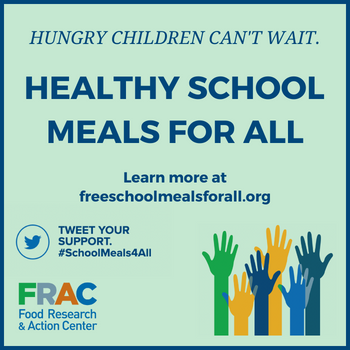Economic Impacts
For struggling families and communities, SNAP is making a huge difference in their economic well-being and health. For example, SNAP is good for local economies – each dollar in federally funded SNAP benefits generates $1.79 in economic activity.
Census Bureau data also show the crucial importance of federal nutrition programs and other supports for low-income families. When looking at the Census Bureau’s Supplemental Poverty Measure, which serves as an indicator of economic well-being, SNAP lifted 4.6 million people out of poverty in 2015.
Health Impacts
Numerous studies demonstrate that SNAP participation and the amounts of monthly SNAP benefits received by households affect the health and well-being of families and children. For instance, a Children’s HealthWatch brief (pdf) documents health improvements for young children who live in households that received increased SNAP benefits provided by the 2009 American Recovery and Reinvestment Act (ARRA). Following the increase, “children in families receiving SNAP were significantly more likely to be classified as ‘well’ than young children whose families were eligible but did not receive SNAP.”
Read More: Massachusetts Inpatient Medicaid Cost Response to Increased Supplemental Nutrition Assistance Program Benefits
The same study also found that the ARRA SNAP boost also had a positive impact on Medicaid costs. “Medicaid cost growth fell in Massachusetts after SNAP benefits increased, especially for people with chronic illnesses with high sensitivity to food insecurity.”
Food Security Impacts
There is strong evidence of SNAP’s effectiveness in alleviating food insecurity. Two studies included in the recent “Long-Term Benefits of the Supplemental Nutrition Assistance Program” White House Report demonstrate this point. Mabli and Ohls (2015) compared households’ state of food security before and after receiving SNAP benefits and found that “SNAP participation reduced the overall fraction of households that were food insecure and the fraction that were very low food secure by around 17 percent and 19 percent, respectively. Mabli and Worthington (2014) find even larger impacts on children’s food security in low-income households with children, showing that food insecurity among children fell by roughly 33 percent after their families had been receiving benefits for about six months.”
Furthermore, the ARRA SNAP benefit boost was terminated effective November 2013 with negative impacts on families. In the wake of that cut, new research from Children’s HealthWatch finds that low monthly SNAP benefit levels and the November 2013 rollback in SNAP benefits have had “a measurable, negative effect on household and child food insecurity.”
For more information on SNAP’s impacts on poverty, food security, health, and well-being, see FRAC’s SNAP and Public Health: The Role of the Supplemental Nutrition Assistance Program in Improving the Health and Well-Being of Americans.

